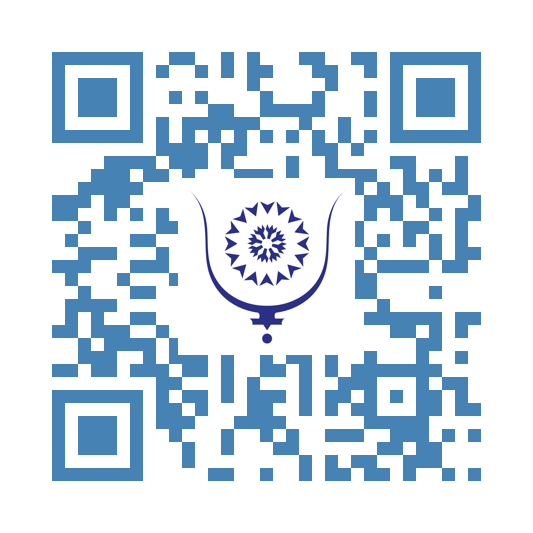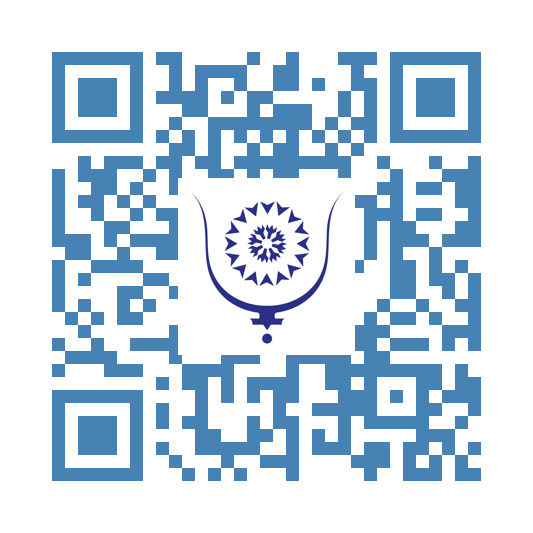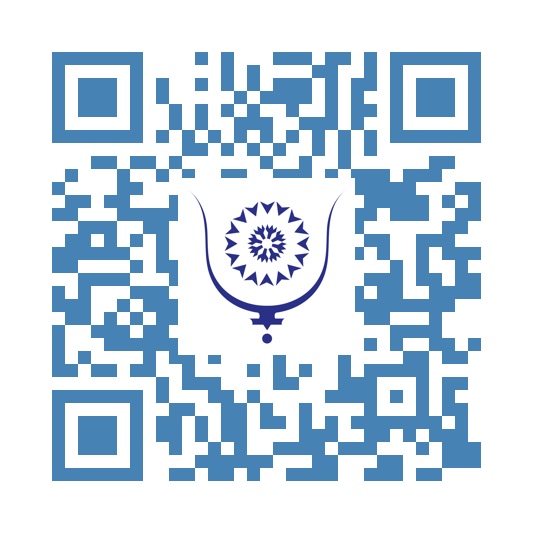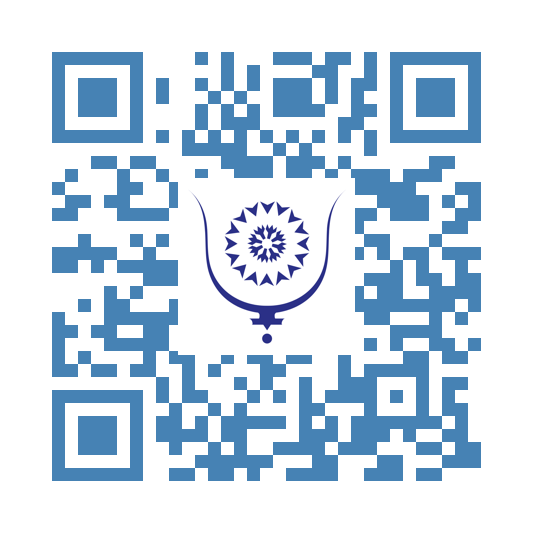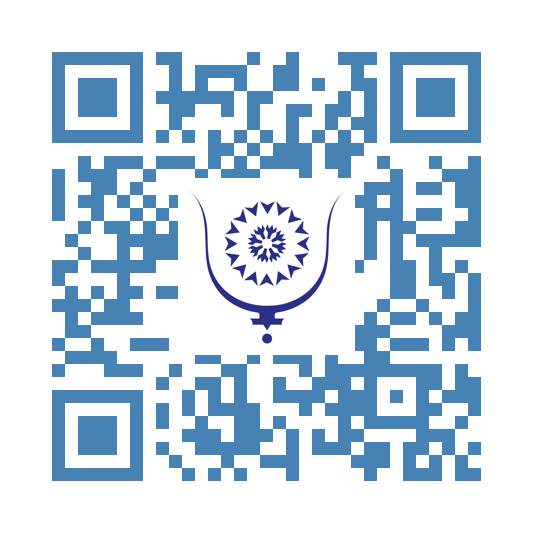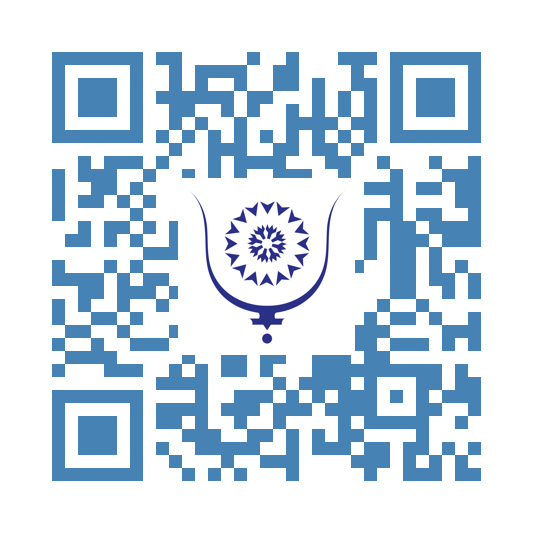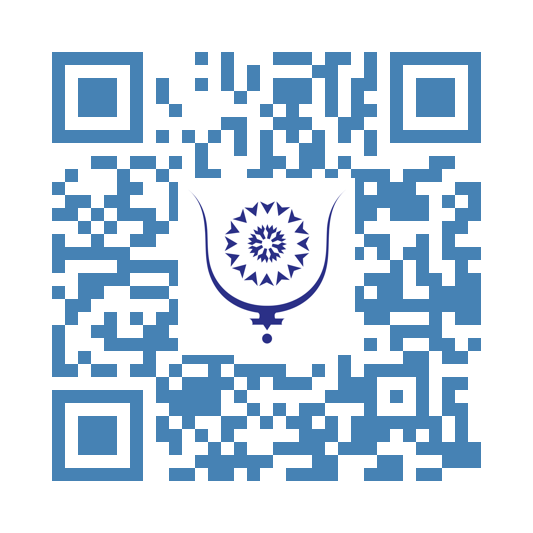Stray dogs and cats: a growing challenge for public health and urban peace in Morocco...
1939
The proliferation of stray dogs and cats in the streets raises major challenges for urban quality of life and even more so for public health. As their numbers increase exponentially, the consequences are multiple: noise nuisances, risk of accidents, spread of diseases, and a sense of insecurity for many citizens.
A notable aspect of this issue is the significant difference between the social perception of cats and stray dogs. Cats, often perceived as less aggressive, are generally not considered harmful. They are abundantly fed in public spaces by individuals, sometimes due to so-called religious beliefs. According to some, Muslims should show compassion towards cats, which would explain a certain social tolerance towards them. They thus benefit from some benevolence and are extremely numerous, living and multiplying in public spaces without being disturbed; on the contrary, shelters are often provided to help female cats give birth peacefully.
In contrast, stray dogs do not receive the same treatment. Many people suffer from cynophobia (fear of dogs), a quasi-cultural phenomenon. More often perceived as a threat, especially because of their ability to attack, they are generally criticized. This negative image has been reinforced following several serious incidents in recent years: violent attacks resulting in serious, even fatal injuries have marked public opinion and increased concerns.
The massive presence of these stray animals has direct repercussions on public health. The absence of veterinary control and regular sanitary interventions promotes the spread of diseases transmissible to humans. Stray dogs and cats can carry highly contagious and serious diseases. This issue is even more worrying in dense urban areas where contact between animals and humans is frequent. Children, in particular, are especially vulnerable to bites or scratches, as well as to the infections that may result.
The health risk is therefore extremely concerning, especially since many diseases can be transmitted to humans.
1. Rabies: a deadly viral disease mainly transmitted by the bite or scratch of an infected dog. It remains a major public health problem in several regions despite vaccination campaigns. Nearly 400 cases and 20 deaths are recorded each year. Four recent death cases have been widely reported.
2. Toxoplasmosis: an infection caused by the parasite Toxoplasma gondii, transmitted by contact with contaminated cat feces, notably via litter. Generally mild, it poses a serious risk for pregnant women, potentially causing fetal malformations.
3. Leptospirosis: a bacterial disease transmitted by the urine of infected dogs, which can cause serious infections in humans. Between 2005 and 2017, 372 cases were declared with a mortality rate of 17.7%. 52.2% of cases occurred in urban areas.
4. Leishmaniasis: a serious parasitic disease transmitted by stray dogs, which are reservoirs of this parasite. Nearly 2,000 cases per year.
5. External and internal parasites: fleas, ticks, intestinal worms, which can also infect other animals.
6. Cat scratch disease: caused by the bacterium Bartonella henselae. It causes fever, swollen lymph nodes, and fatigue, especially in children and immunocompromised people.
7. Ringworm: a contagious fungal infection through contact with the fur or environment of infected cats, causing distressing skin lesions.
8. Pasteurellosis: a bacterial infection transmitted by bite or scratch, caused by Pasteurella multocida, which can cause local pain and inflammation.
9. Echinococcosis: a parasitic disease related to intestinal worms developed in cats, which can severely affect the human liver and lungs.
10. Mange and other parasitic infections: transmitted by direct contact with affected stray cats.
Strict sanitary management is therefore necessary, including vaccination, sterilization, and responsible handling of this animal population in urban areas.
Beyond health risks, stray animals cause nuisances in streets and residential neighborhoods. Nocturnal barking disturbs residents' sleep, while droppings in public spaces degrade cleanliness and the image of cities.
Facing this complex situation, several approaches can be considered. It is crucial to develop awareness campaigns to encourage citizens to adopt responsible behaviors, especially regarding food given to stray animals. Special emphasis should be placed on sterilization to control reproduction.
Moreover, implementing integrated public policies combining capture, veterinary care, and relocation of stray animals appears essential. These measures must respect the cultural and religious sensitivities of the country, notably involving religious authorities in creating harmonious responses. A fundamental effort towards creating dedicated spaces—shelters and controlled feeding points—could channel animal presence and reduce conflicts with the population.
Moroccan NGOs published an open letter addressed as a last resort to His Majesty the King on August 3rd, reacting to extermination campaigns led by some local authorities:* "We have exhausted all institutional channels without finding attentive ears among the authorities concerned," *they say, describing the methods used as "cruel,*" contradicting " *the values of compassion promoted by religion and the monarchy." The problem is exacerbated, according to some, by an ineffective public policy and a lack of resources dedicated to capture, sterilization, and care. The cycle of proliferation would continue, reinforcing a difficult-to-reverse spiral. The government denies these accusations and states that it applies the method **"Trap, Neuter, Vaccinate" **(catch, sterilize, vaccinate, and release animals identified by an ear tag in their original territory). It would have allocated 230 million dirhams to this. However, few tagged animals are seen in the streets.
Clearly, this is not just an animal issue but a major public health and urban coexistence challenge that requires a pragmatic and balanced approach, respectful of traditions and sanitary and security needs.
Share:
Stray dogs and cats: a growing challenge for public health and urban peace in Morocco...
copy:
https://bluwr.com/p/315072485
Multidimensional Poverty: Decoding the Oxford Index and the Situation in Morocco
2783
When poverty is mentioned, it is often thought of as insufficient income. However, poverty encompasses much broader and more complex dimensions such as access to education, health, decent housing, and other basic resources depending on societies and their cultures.
It is on this or a very similar basis that the Multidimensional Poverty Index (MPI) was designed and unveiled in 2010 by the Oxford Poverty and Human Development Initiative (OPHI) at the University of Oxford. The index was adopted during the 20th anniversary of the United Nations Development Programme (UNDP).
But what exactly is multidimensional poverty or the Oxford Index?
*Multidimensional poverty is the simultaneous and synchronous deprivation experienced by individuals across different essential aspects of life. The Oxford Index, or MPI, aims to measure this aspect of poverty based on 10 indicators grouped into three main dimensions: health, in terms of nutrition and child mortality; education, concerning school attendance, years of schooling, and living conditions; namely access to drinking water, electricity, sanitation facilities, quality housing, and essential assets.*
A household is considered poor according to the MPI if its members are deprived in at least 33% of these indicators. The index is calculated using a simple formula:
**MPI = H × A**
where **H** is the proportion of people who are poor and **A** is the average intensity of deprivation among these people.
This approach provides a more nuanced diagnosis than a simple monetary measure of poverty. It allows identifying the exact origin and nature of the deprivations and thus more effectively guides public action.
The introduction of the MPI in Morocco has profoundly renewed the understanding of poverty in the country. Ten years ago, this index stood at 11.9%. Thanks to significant mobilization and targeted policies, this rate has decreased to 6.8% according to the 2024 national census, representing a halving. Translated into numbers of affected people, the rate dropped from 4.5% to 2.5% of Morocco’s current 36 million population.
Despite these notable advances, poverty remains marked by strong regional and social disparities. Deprivations mainly concern education and living conditions such as access to drinking water, decent housing, and medical care. Multidimensional poverty is more concentrated in rural areas, accounting for 72% of the poor, with an alarming rate among rural children estimated at nearly 69%.
In his 26th Throne Speech, His Majesty the King acknowledged the progress made while expressing dissatisfaction and the determination to rapidly correct the situation.
Indeed, Morocco is still behind many other countries that display lower multidimensional poverty rates and have recorded faster declines in the index; some countries have therefore succeeded better. For example, Croatia already had a rate below 0.5% in 2022. China, with 12.5% in 2002, and Turkey, with an index of 8.5% in 2007, have recorded faster decreases and are now among the best-ranked countries. Several countries in Asia and Latin America have also seen significant declines thanks to innovative strategies, ambitious social policies, and sustained international support.
Morocco remains better ranked compared to many Sub-Saharan African countries. Mali had an MPI of 77.7% in 2012 and Burundi 80.8% in 2010. However, Morocco still maintains a significant gap with global leaders and even some developing countries in the Mediterranean and Asia.
To enable the Kingdom to maintain and accelerate its progress, drastic and effective measures requiring genuine political courage and boldness are needed. Several avenues should be considered simultaneously, such as:
- Optimizing investment in education by reducing school dropout, promoting equal access for girls and boys in rural areas, and improving teaching quality and attractiveness through teacher qualification and adapted curricula.
- Seriously addressing the issue of the language of instruction. Moroccans speak a language that is not reflected in schools. Darija is the Moroccan language and should be valorized to create a continuum between everyday life and learning. All education specialists and dedicated international bodies insist on the use of the mother tongue for more efficient learning, at least in the early school years, as seen in all countries successful in education.
- Redefining what illiteracy means in Morocco. Is it still appropriate to consider illiteracy as the inability to master languages that are not used in daily life? The working language and trades that sustain Moroccans and in which all exchange, communicate, and act are not taken into account. This question must be reconsidered in light of scientific evidence, without outdated or unproductive dogma or ideology.
- Accelerating medical coverage and social protection through a faster and less restrictive generalization.
- Encouraging health and education professionals to settle in remote and targeted areas through significant financial incentives and housing.
- Expanding and strengthening basic infrastructure with particular focus on drinking water, electricity, sanitation, and social housing even in rural areas. The issue posed by scattered housing should no longer be a taboo. Some recurring problems simply cannot be solved in certain regions due to the type and location of housing.
- Targeting public efforts territorially through fine planning and priority allocation of appropriate resources to the most vulnerable regions, taking into account the real needs of the populations concerned.
- Developing and refining social safety nets and resilience mechanisms to better protect populations affected by climate change.
By adopting an integrated, territorially targeted approach based on precise MPI data, Morocco can consolidate the gains already made and catch up with the best performers in the region and the world in the near future, given its stability, significant growth rate, diversified and increasingly efficient economy, and, of course, the ingenuity of its people.
Share:
Multidimensional Poverty: Decoding the Oxford Index and the Situation in Morocco
copy:
https://bluwr.com/p/312787111
[Science #4] Precision Nutrition: Tailoring Your Diet Beyond Hunger and Excess
2977
Hunger and dietary excess may seem like opposite ends of the spectrum, yet both can undermine health. Too few calories disrupt essential physiological processes and energy metabolism, while chronic overeating—especially of nutrient-poor foods—can drive metabolic dysfunction, chronic inflammation, and raise the risk of long-term diseases. Ironically, consuming more nutrients than needed often fails to meet the body’s precise biochemical demands, accelerating cellular wear and potentially shortening lifespan.
Emerging research suggests that certain calorie-dense foods, when consumed carelessly, may harm healthspan—the number of healthy years lived. Conversely, mindful nutrient intake—or even periods of moderate hunger—can sometimes benefit overall physiology more than habitual overeating. The key lies in recognizing that each individual’s nutritional needs are unique. This is the foundation of Precision Nutrition.
**From "One-Size-Fits-All" to Tailored Nutrition**
The term “precision” is often associated with medicine, where a treatment is matched to a patient’s genetic profile instead of relying on a standard prescription. That same philosophy is now transforming the way we think about food. Personalized nutrition moves beyond outdated dietary guidelines by using your genetic makeup, lifestyle, and preferences to determine which foods serve your body best. Your DNA might reveal, for example, that you absorb certain vitamins inefficiently, or that specific foods help stabilize your blood sugar more effectively. This approach empowers you to make dietary choices tailored to your biology—not to fleeting trends.
**How Does It Work?**
It starts with a DNA sample, analyzed for hundreds of tiny genetic variations known as polymorphisms. These influence traits like lactose intolerance, vitamin D absorption, caffeine metabolism, and sensitivity to salt or sugar. Using advanced algorithms, nutrition scientists translate this data into actionable diet strategies.
For instance:
- If your genes show low omega-3 absorption, your plan might emphasize fatty fish, flaxseed, or targeted supplements.
- If you metabolize caffeine slowly, reducing coffee intake could help avoid sleep problems or anxiety.
One striking example comes from the GC gene, which affects how well your body raises blood vitamin D levels after supplementation. People with certain GC variants may require more sunlight exposure or higher supplement doses to achieve optimal health. The power of personalized nutrition lies in decoding the relationship between your genes and every bite you take—turning food into a truly personal form of medicine.
A comprehensive understanding of each individual’s unique nutritional needs—driven by genetic, metabolic, microbiome, and lifestyle factors—enables the development of personalized dietary interventions that have transformative potential far beyond individual health. Precision nutrition not only enhances quality of life and healthspan but also offers a pathway to optimize resource use and address global challenges such as hunger and malnutrition.
Emerging perspectives highlight that precision nutrition, while often associated with high-income countries, is increasingly seen as a vital strategy to democratize health and tailor nutrition recommendations for entire populations, including those in low- and middle-income countries where malnutrition and food insecurity remain urgent issues. By leveraging advanced technologies and data-driven diagnostics, precision nutrition can target specific micronutrient deficiencies, metabolic conditions, and even genetic variations prevalent in different communities. This targeted approach moves beyond generic dietary guidelines, allowing for more effective, culturally relevant, and sustainable interventions that better meet the biochemical and physiological demands of diverse populations.
Share:
[Science #4] Precision Nutrition: Tailoring Your Diet Beyond Hunger and Excess
copy:
https://bluwr.com/p/306841367
The Sevenfold Constitution of the Human Being
3030
Several esoteric traditions believe that the human being is not limited to a single body of flesh and blood, but instead exists as a amalgam of seven interpenetrating bodies, each vibrating at a distinct frequency and corresponding to a unique level of consciousness. This constitution in layers forms a bridge between the material and the divine, mapping the soul’s descent into matter and its potential ascent back to the source.
The physical body is the most tangible and material of the seven. It serves as the vessel through which the soul experiences the physical world, bound by the laws of biology, space, and time. It is composed of flesh, bone, and matter, but it does not exist in isolation. Its vitality is sustained by subtle forces, and without these, it would be inert. The physical body is the site of sensation and action, allowing the soul to manifest its will within the temporal realm.
The etheric body, also known as the vital or pranic body, underlies and interpenetrates the physical form. It is made of subtle life-energy and functions as the blueprint or energetic matrix that maintains the structure and function of the material body. It is through this body that prana, chi, or life-force flows, animating tissues, regulating health, and forming the auric field sometimes noticed by those with psychic sensitivity. It connects the material to the immaterial, serving as a bridge between body and soul.
The astral body governs emotion, desire, and imagination. It is the seat of passions, instincts, and inner images, and it serves as the vehicle for dreams and psychic experiences. This is the body that travels in the dream state or in altered states of consciousness and is central to experiences of astral projection. It has a more fluid consistence than that of the etheric, and it responds instantly to emotional impulses, making it the most volatile and reactive of the subtle bodies.
The mental body is the domain of thought, cognition, and reason. It is often divided into two components: the lower mental body, which takes part in concrete thinking, memory, and logic, and the higher mental body, which perceives abstract truths, archetypes, and universal principles. Through the mental body, we develop self-awareness, belief systems, and discernment. It is through the improvement of this body that the ego begins to dissolve, allowing thought to serve truth rather than self-interest.
The causal body, or buddhic body, contains the soul’s higher wisdom and accumulated experience. It is the vessel of intuition, compassion, and non-dual perception. This body exists beyond linear time and holds the karmic imprint of previous incarnations—the lessons learned and the spiritual tendencies cultivated. It is the realm of inner guidance and soul purpose, allowing the being to act from harmony rather than reaction, and to notice unity where the lower mind sees separation.
The spiritual body, or atmic body, represents the divine will and the soul's alignment with cosmic purpose. It is the seat of spiritual volition—not personal desire, but the execution of the higher law. This is the level of mastery where individual will is surrendered to divine intention, and where the soul becomes a conscious co-creator with the universal intelligence. Those who access this body operate from a plane of deep inner sovereignty and radiant stillness, often manifesting profound spiritual authority.
At the highest level lies the monadic body—the pure spark of divinity, the eternal self, the undivided essence from which all the other bodies emanate. The Monad is beyond all form and function, untouched by time, death, or individuality. It is the source of all consciousness within the being and the point of union with the Absolute. Realization of the Monad is the apex of spiritual evolution, where the soul transcends all identities and merges into the infinite. It is the return to the One, the reintegration of the many into the indivisible light of origin.
In most human beings, these bodies remain partially dormant or fragmented. The great work of spiritual initiation is to harmonize and awaken each body, gradually purifying the lower vehicles and aligning the consciousness to subtler vibrations. Practices such as ritual, meditation, prayer, alchemy, asceticism, and sacred study serve to align these bodies and bring them under the guidance of the Monad.
As one ascends the inner planes, perception shifts from the senses to symbols, then to pure archetypes, and finally to the formless light of the divine. The path is not linear but spiral—each cycle of refinement bringing the soul closer to its origin and its infinite potential.
Share:
The Sevenfold Constitution of the Human Being
copy:
https://bluwr.com/p/304907584
Moroccan Tourism in 2025: Spectacular Growth but Persistent Challenges
3177
Moroccan tourism has been experiencing a very favorable phase since 2024. Tourism revenues reached nearly 50 billion dirhams in the first quarter of the current year, confirming a robust recovery after the global health crisis. This upswing is the result of a combination of factors that can be analyzed from several perspectives.
Certainly, the gradual lifting of health restrictions worldwide enabled a massive return of international visitors, particularly Europeans, but also travelers from other regions of the globe. With its unique cultural richness, history, lively medinas, diverse landscapes ranging from the Atlas Mountains to the Atlantic and Mediterranean beaches, sunshine, colors, unparalleled craftsmanship, refined cuisine, and the warmth of Moroccans—their smiles, their ability to quickly connect with others, and their tolerance—the Kingdom has managed to attract clientele seeking authentic and varied experiences. After two difficult years, this strong recovery reflects renewed tourist interest in the destination.
According to the government, the rise of the tourism sector is linked to a strategy and sustained policy of investment in infrastructure: world-class hotels, improved transport networks, airport modernization, and expansion of air routes. These efforts have undoubtedly significantly enhanced the country’s accessibility as well as visitor comfort and security, all now essential elements to remain competitive in a highly competitive international market.
The Kingdom has also heavily invested in its global visibility through well-calibrated promotion campaigns, regular presence at major international trade shows, and strategic partnerships with key tourism players. This well-thought marketing strategy has attracted a diverse clientele, amplifying the effect of a strong national brand.
Developing the tourism offer plays a crucial role in this dynamic. In addition to traditional cultural and seaside getaways that the country is famous for, Morocco is now focusing on growing segments: adventure tourism, desert trekking, extreme sports, ecotourism, national parks, protected areas, and cultural events, international festivals, and exhibitions. This diversification aims to attract different tourist profiles year-round and avoid excessive seasonality.
The exceptional event of the 2022 FIFA World Cup, through the performance of the Moroccan national team and the enthusiastic support of its supporters in the stadium and the streets of Doha, had an amplifying effect on the country’s global visibility and image. This competition put Morocco on the international tourism map, attracting a significant influx of visitors and creating immediate spotlight on its attractions. As a direct result, Morocco exceeded in 2024 its initial target of 17.5 million tourists planned for 2026—a remarkable achievement.
However, without contesting the announced figures, this bright spot should not mask certain challenges. A closer look at the statistics reveals a different reality. A significant portion of recorded tourists, about 50%, are Moroccans residing abroad (MRE), who visit mainly for family reasons rather than tourism linked to government strategies. It should not be overlooked that these same MRE often denounce recurring problems, foremost among them the high cost of air transport with Royal Air Maroc, which is heavily subsidized by public funds. Price gouging in hotels and restaurants, especially in summer, is also widely criticized. These difficulties impact the retention of international visitors as well, as return rates are very low. The fact that operators at all levels impose exorbitant price increases during peak season tarnishes the country’s image and discourages visitors.
Staying in Morocco is abusively expensive for unclear reasons.
Indeed, few tourists return multiple times after their first visit. This raises questions about the quality of the customer experience and the destination’s competitiveness.
Excluding MRE and visitors traveling for professional reasons, the number of foreigners visiting Morocco by deliberate choice is therefore not that high. This calls into question the efficiency of the very large subsidies granted to the sector and, above all, the effectiveness of the promotional campaigns.
The Ministry of Tourism and the National Tourism Office attribute the recorded success to their proactive policy, but the reality shows that this growth largely relies on the emotional attachment of the MRE, a factor less controllable by public authorities.
Will the post-World Cup momentum and the goodwill generated be sustained over the long term?
It is difficult to precisely gauge how much of the upswing is due to the World Cup context and what the real impact of public policies is, especially subsidies and aid allocated to the sector. This impact, however, cannot be ignored.
To maintain the course and ensure sustainable growth of the sector, it is essential that Morocco continues and deepens its efforts: ongoing investments and innovation in the tourism offer. However, the major urgent challenge remains controlling the outrageous costs for visitors. The government’s silence on this issue risks hurting the sector badly. The summer sunshine is too expensive. It is time for the entire industry to stop acting like predators, and for scams and extortion to be forever banned quickly.
Another key challenge is integrating sustainable development policies to preserve natural and cultural resources within the broader framework of inclusive development across all regions of the country. It is also imperative to include citizen awareness and education in this vision. Polluted or neglected beaches and sites, annoying incivility, and inappropriate behaviors are additional challenges to be addressed.
Tourism must remain one of the major engines of Morocco’s economy, generating jobs and wealth while enhancing the country’s international standing.
Still, we shall wait until the end of the campaign to make a final judgment, especially on the trajectory of the numbers and the effectiveness of measures announced in the sector’s development strategy, and above all to draw the necessary lessons.
Share:
Moroccan Tourism in 2025: Spectacular Growth but Persistent Challenges
copy:
https://bluwr.com/p/302091841
[Short Stories #4 ] A Red Flower Among the Ice [1/3]
3351
The radio crackled softly in the dim kitchen, the announcer’s voice steady but tinged with concern.
“This week, heavy snow is expected. Please be careful if you must travel and …”
Karl was busy on the living room floor, toy cars rattling loudly in his hands as they scattered across the rug. His father, standing in the kitchen doorway, raised a hand gently.
“Karl, please, not so much noise. I want to listen to what they’re saying on the radio.”
“Sorry, Dad,” Karl muttered, setting one of his cars aside, his brow furrowed with boredom.
Their mother entered, phone pressed to her ear, a tired sigh escaping her lips.
“No classes this week,” she announced.
Karl groaned, “Another boring week stuck at home.”
“Dinner’s ready,” his mother called, her voice breaking the silence. “Come eat before it gets cold.”
Karl trudged to the table, the long winter night stretching out before him—cold and quiet, just like the thick ice blanketing the world beyond their windows. The house felt suspended in time, the wind whistling now and then, the only other sound the gentle hum of the old radio. Outside, street lamps cast faint halos through frosted glass.
The days passed slowly, one blending into the next, each wrapped in an endless layer of white. The world outside seemed to hold its breath, every noise muffled by the heavy snow. Streets once filled with color and movement were now hushed and blank, as if time itself had frozen.
At last, on the final day of the week, their mother opened a window wide.
“Look,” she whispered. “The snow has stopped. It’s beautiful today.”
Karl hurried to her side, eyes wide as he peered out. The garden glistened beneath the weak morning sun, untouched except for delicate patterns of frost sparkling quietly.
“Can I go outside? Just for a little while?” Karl pleaded, his hope unmistakable.
His mother smiled softly.
“Okay, but dress warmly—and don’t go too far.”
Bundled up in scarf and mittens, Karl stepped outside, his breath clouding in the crisp air. He clutched his favorite toy car, venturing into the silent, frozen yard. Everywhere he looked, white shimmered—nature itself seemed on the verge of beginning anew.
Suddenly, amid the endless white, a surprising splash of color caught his eye.
“What’s that?” Karl whispered.
Moving closer, he saw it: a single brave red flower pushing through the icy crust, vivid and alive against the snow. Its petals tilted upward, reaching as if to catch every drop of sunlight.
The sight filled Karl with wonder.
“So beautiful,” he murmured. “What are you doing here, all alone?”
He circled the flower, curiosity mounting. He didn’t understand how anything so small, so delicate, could survive here.
“I’ll take you home with me,” he decided. Gently, he cupped his hands to pull the flower free—but it didn’t budge. Its roots, deep within the ice, held fast. Karl tried again, but it remained stubbornly in place.
Disappointed and hungry, the little boy picked up his toy car and made his way back indoors.
That evening, as the family gathered for dinner, his mother asked, “Karl, how was your walk today? You didn’t say anything when you came inside.”
Karl hesitated, then replied quietly, “I found a red flower growing in the ice.”
Everyone laughed. His father teased, “Poor flower, it must be freezing out there!” They chuckled, but Karl was stung. No one believed what he’d seen.
After dinner, the house quieted once more. The family went to bed, the next day would be the start of a new week—school would resume.
Morning came. Karl’s mother called up the stairs, “Karl, time to get up for school!”
No answer. She climbed to his room.
Karl was not in the room…
Share:
[Short Stories #4 ] A Red Flower Among the Ice [1/3]
copy:
https://bluwr.com/p/301048085

